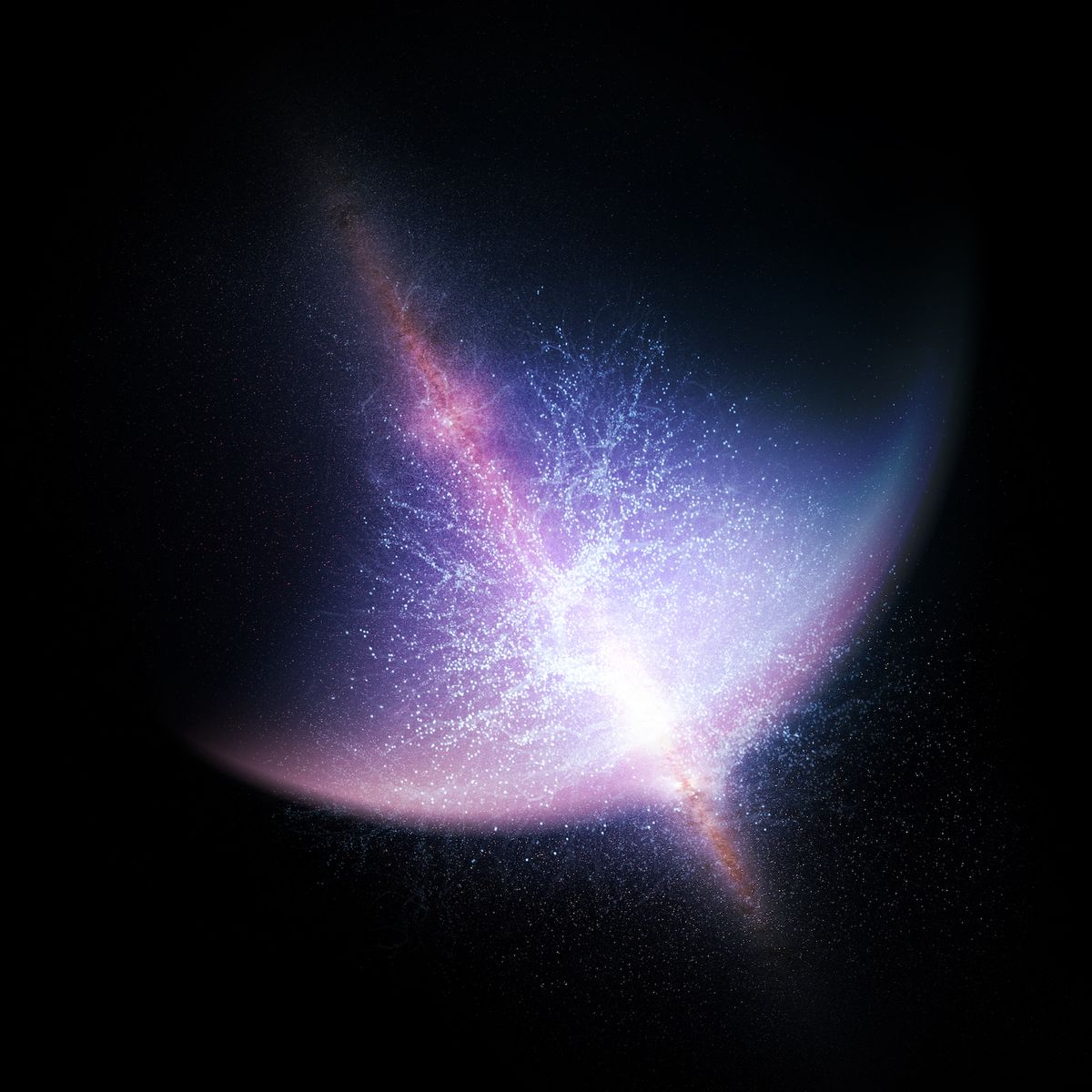The Universe is a large place, and there are a lot of large things in it. Not just galaxies, but groupings of galaxies, and the
cosmic web that connects them all together.
Scientists have just discovered what appears to be one of these groupings, and it could have serious implications for our understanding of the evolution of the Universe. It's an almost-symmetrical arc of galaxies at a distance of 9.2 billion light-years away, and, at 3.3 billion light-years across, it's one of the biggest structures ever identified.
Astronomers are calling it the Giant Arc, and, if confirmed, it joins a growing number of these giant structures. This number represents a dilly of a cosmological pickle.
"The growing number of large-scale structures over the size limit of what is considered theoretically viable is becoming harder to ignore,"
said astronomer Alexia Lopez of the University of Central Lancashire, UK.
"According to cosmologists, the current theoretical limit is calculated to be 1.2 billion light years, which makes the Giant Arc almost three times larger. Can the standard model of cosmology account for these huge structures in the Universe as just rare flukes, or is there more to it than that?"
Our
standard model of cosmology is founded on something called the Cosmological Principle. This states that, on large enough scales, the Universe is homogeneous, or 'smooth', in all directions. Each section of the Universe should look more or less like every other section of the Universe, with no major inconsistencies or bumps.
Large-scale structures, over a size larger than about 1.2 billion light-years, would be considered just such a bump. One or two such bumps might be considered a coincidental arrangement, but more and more keep popping up in the data.
There's the
Sloan Great Wall, around 1.5 billion light-years across. The discovery of a similar structure called the
South Pole Wall, roughly 1.37 billion light-years across, was announced last year. The
Clowes-Campusano LQG group of galaxies is 2 billion light-years across, and the
Huge Large Quasar Group is 4 billion. The
Hercules-Corona Borealis Great Wall is the biggest, potentially spanning as much as 10 billion light-years.
The Giant Arc was discovered in data from the Sloan Digital Sky Survey. Lopez and her colleagues studied the light of quasar galaxies - the brightest galaxies in the Universe, illuminated by the voraciously active supermassive
black holes at their centers.
When the light from these galaxies passes through gas in intergalactic space, some wavelengths are absorbed. The spectral absorption lines generated by this process can be used to map the distribution of matter in the Universe. Using this method, the researchers noticed that the Giant Arc galaxies seemed to be clustered together.
Deeper analysis seems to almost confirm it. The team's results have a confidence level of 99.9997 percent, or 4.5 sigma - not quite enough for the 5-sigma gold standard for significance, so there's still the possibility that it's a chance arrangement, but still, the finding is pretty interesting.
If astronomers continue to identify such large structures in the Universe, it may mean we need to have a good think about the Cosmological Principle.
"The night sky, when viewed on a sufficiently large scale, should look the same, regardless of the observers' locations or the directions in which they are looking,"
Lopez said.
"The Giant Arc we are seeing certainly raises more questions than answers as it may expand the notion of 'sufficiently large'. The key question is, what do we consider to be 'sufficiently large'?"
The team will be looking at other data, chasing that 5-sigma confidence level. Given the preponderance of detections of other giant structures, too, it's looking increasingly like cosmologists will have a significant amount of work to do.


 the image on the post doesnt make any sense at all? is this news for real? because that website contains shit load of auto load ads when you scroll at the bottom, if we do cross reverse image search in google none to be found related to this title.
the image on the post doesnt make any sense at all? is this news for real? because that website contains shit load of auto load ads when you scroll at the bottom, if we do cross reverse image search in google none to be found related to this title.the image on the post doesnt make any sense at all? is this news for real? because that website contains shit load of auto load ads when you scroll at the bottom, if we do cross reverse image search in google none to be found related to this title.
